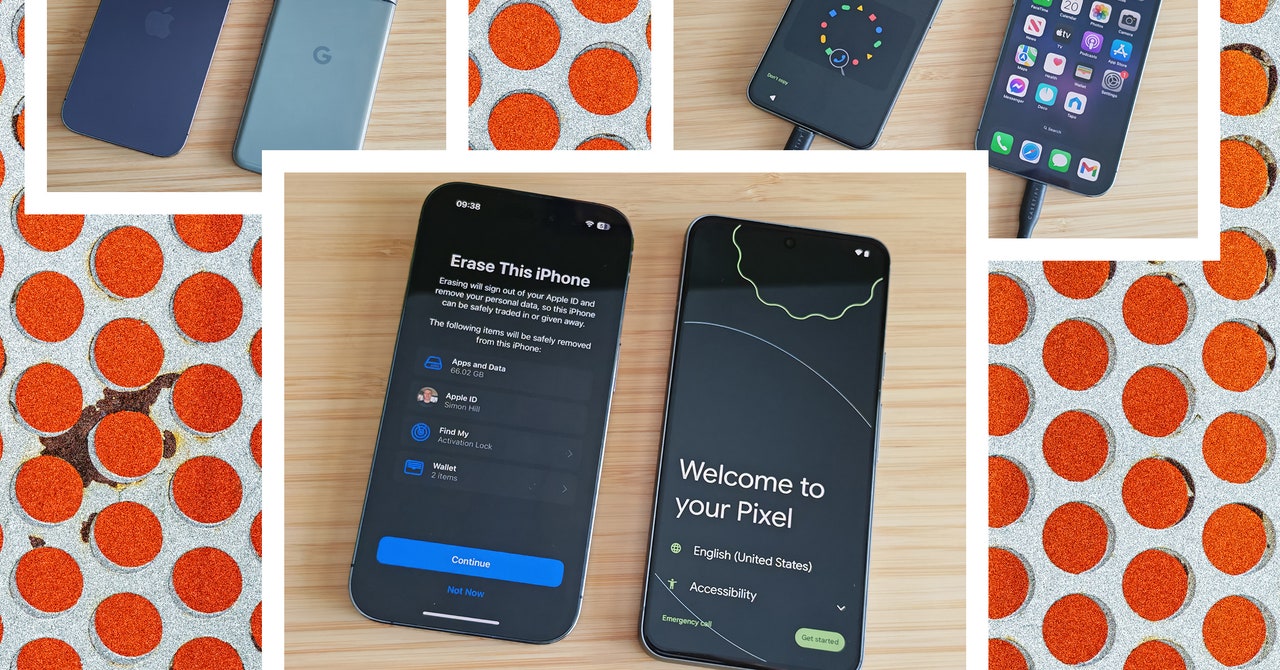Ignore the arguments about which is better, because iPhones and Android phones have far more in common than some folks will admit. Switching from an iPhone to an Android phone is pretty painless these days, and you can take all your stuff with you, including photos, messages, and other bits and pieces.
With the upcoming iOS 18 update, iPhone owners will finally get RCS messaging, the upgrade from SMS that will hopefully fix many of the problems people currently face when texting between iPhone and Android. One extra reason to potentially explore a new phone operating system. This guide covers all you need to know about how to switch from an iPhone to an Android phone.
What You Need to Get Started:
- Your old iPhone.
- Your SIM card (not required for eSIM activation).
- Your Wi-Fi details (home network and Wi-Fi password).
- Your Google account details (you can set up an Android phone without a Google account, but you need one to use Google services and get the best from it).
- A switching app (Google’s Switch to Android, Samsung Smart Switch Mobile, or another).
- A USB-C to USB-C or Lightning to USB-C cable (not essential, but allows a faster transfer).
Photograph: Simon Hill
Begin by Backing Up
The iPhone-to-Android switching process is usually plain sailing, but it’s always smart to back up before you begin anything like this. Back up first and you won’t lose anything you care about. For some of the methods below, you also need a backup to restore on your new phone. We have guides on how to back up your iPhone and how to back up your Android phone. You should back up your iPhone to iCloud, but you might also want to consider backing up to Google One (more on that later).
Remember that you can back up data within certain apps, such as WhatsApp, to avoid losing your conversations (Settings > Chats > Chat backup). You should also consider any authenticator apps you have and check what the transfer process is to avoid losing secure access to services and websites.
Preparing to Switch
If you can keep your old iPhone for the switching process, it will be much easier and faster to complete. Either way, there are a couple of tasks to take care of on your iPhone. Go to Settings > Messages to toggle iMessage off, and do the same with FaceTime. If you forgot to do this and no longer have your iPhone, you can still deregister on this page on Apple’s support page.
It’s a good idea to check how much data you have on your iPhone. Take a look in Settings > General > iPhone Storage and make sure that your new Android phone has enough space for you to copy everything over. If it lacks the necessary room, see what you can delete. Now, you are ready to switch.
How to Switch From iPhone to Android
You can usually copy data from your old phone at some point during the setup process. If your iPhone keeps locking during this process, it can get annoying, so before you start copying data, go to Settings > Display & Brightness > Auto-Lock and set it to Never.
How to Transfer Data Using a Cable
The fastest and easiest way to transfer data is to use a cable. This process varies slightly with different Android manufacturers. If you are switching to a Google Pixel, for example, it is as easy as this:
- Turn on your new Pixel, choose your language and region, and tap Get Started.
- On the Set up using another device page, tap iPhone or iPad.
- Choose your Wi-Fi network and connect to it. It may take a few minutes while “Checking info.”
- Sign in to your Google account.
- Insert your SIM card or set up your eSIM.
- Set up a PIN and fingerprint unlock.
- It’s time to Copy data from your iPhone, tap Next.
- Connect your iPhone and Pixel with a Lightning to USB-C cable (or USB-C to USB-C cable if you have an iPhone 15 or later).
- You need to enter your iPhone PIN to trust the connected Pixel.
- Now, you can select what you want to copy across and tap Copy to start the process.
- If you choose to copy Apps, it will give you a list of the matching apps it managed to find (some in-app purchases and settings will not copy across, and you will have to buy premium apps again).
- Once it is done copying, you can disconnect your iPhone and complete the last few tasks to get your new Pixel up and running.

